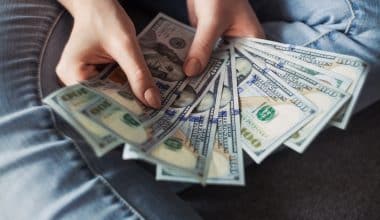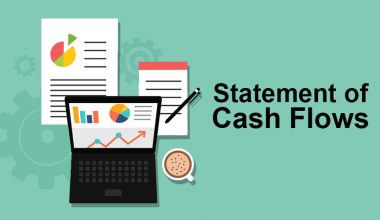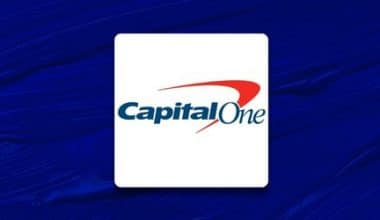Do you want to sell your house and invest the proceeds in stocks or bonds? Wanna know how much money you’ll get back if you invest in real estate with cash-on-cash? See what steps to take and what pitfalls you’ll want to avoid to make sure your investment is as profitable as possible. A good cash-on-cash return calculator is essential for real estate investors, so we’ll go over how to calculate one in this guide.
The market for property has never been better. A recent Forbes article stated, “Real Estate is One of the Best Investments in America.” But, with this high demand and increasing competition, it’s more important than ever to know your approach before making that huge investment.
When it comes to real estate investing, one of the most important metrics to consider is your COCR.
What is Cash on Cash Return?
Cash on cash return is a metric that measures the percentage of your annual pre-tax cash flow that you’re receiving back on the amount of money you’ve invested. So, if you have a property that you’re renting out for $1,200 per month and your expenses (mortgage, taxes, insurance, etc.) total $400 per month, your COCR would be 33%.
Why is Cash on Cash Return Important?
As a real estate investor, you’re always looking for ways to increase your return on investment (ROI). One of the most important metrics to consider is your cash-on-cash return (COCR). In a nutshell, COCR measures the percentage of your cash investment that you receive back in the form of rental income.
A high COCR is preferable, but it’s not the only factor that you should consider when assessing a potential investment. For example, a property with a lower COCR may be located in an area with stronger rental demand and/or have higher long-term appreciation potential.
Nevertheless, COCR is an important metric to keep in mind when analyzing any potential real estate investment. By understanding COCR and its factors, you can make better investment decisions.
How to Calculate Cash on Cash Return
If you’re a real estate investor, then you’re probably always on the lookout for ways to maximize your return on investment. One way to do this is to calculate your cash on cash return.
Cash on cash return is a measure of how much cash flow you’re generating from your investment property after accounting for all of your expenses. To calculate it, simply take your annual net operating income (NOI) and divide it by your total investment.
For example, let’s say you purchase a rental property for $100,000 and your total annual expenses come to $10,000. This leaves you with an NOI of $9,000. Dividing this by your total investment gives you a COCR of 9%.
As you can see, calculating your COCR is a quick and easy way to measure the performance of your investment property. Keep in mind, however, that it’s just one metric among many that you should use when evaluating an investment.
Good Cash on Cash Return
If you’re looking for a good return on your investment, you can’t go wrong with COCR. This metric is often used to measure the profitability of real estate investments, and it simply refers to the ratio of net operating income to the initial investment. In other words, it tells you how much money you’re making for every dollar you’ve invested.
Generally speaking, a good cash-on-cash return is anything above 8%. That means that for every $100 you invest, you’re bringing in at least $8 in profit. And of course, the higher the better! Several factors can affect your COCR. For example, if you’re investing in a property that requires significant repairs or renovations, your initial investment will be higher and your return may be lower as a result.
Location is also important. A property in a high-rent area is more likely to generate a good return than one in a lower-rent area. And of course, the overall health of the real estate market will also have an impact.
If you’re looking for a solid investment with a good return, COCR is something to consider.
Cash on Cash Return vs ROI
As a real estate investor, you’re always looking for ways to increase your return on investment (ROI). One metric that is often used to measure ROI is cash on cash return (COCR). But what is COCR and how does it compare to ROI?
COCR is a metric that measures the cash flow from a rental property after accounting for all operating expenses. It is calculated by taking the net operating income (NOI) and dividing it by the total cash invested in the property.
NOI is the rental income from a property minus all operating expenses, such as property taxes, insurance, and repairs. For example, let’s say you own a rental property that generates $1,000 in monthly rental income and has $200 in monthly operating expenses. Your NOI would be $800 ($1,000 – $200), and your COCR would be 8% ($800/$10,000).
ROI is a similar metric, but it measures the percentage of investment gain or loss relative to the original investment amount. For example, if you invest $10,000 in a rental property and sell it two years later for $12,000, your
Cash on Cash Return Calculator
The COCR ratio tells you how much cash flow you’re generating relative to the amount of money you’re putting into the property.
The higher your CCR, the better, as it means you’re earning a higher return on your investment. Use our free Cash on Cash Return Calculator to easily calculate your CCR for any investment property. Simply enter the purchase price, down payment, interest rate, loan term, and annual operating expenses. The calculator will do the rest, giving you your CCR percentage.
Keep in mind that your COCR is just one metric to focus on when assessing an investment property. Be sure to also look at other factors such as the net operating income (NOI), cap rate, and internal rate of return (IRR).
How to Use the Cash-on-Cash Return Calculator
As a real estate guru, you know that the COCR is an important metric to track. This return tells you how much cash flow you’re generating from your investment property relative to the amount of money you’ve invested.
If you’re looking to buy an investment property, you can use our cash-on-cash return calculator to see how different properties compare. To use the calculator, just enter the purchase price of the property, the down payment, the interest rate, and the terms of the loan. Then, enter your estimated monthly rent and expenses. The calculator will then show you the estimated COCR for each property.
You can use this information to help you make a decision on which property is right for you. Remember, a higher COCR means more cash flow for you as an investor. So, if all things are equal, go with the property that has the higher return!
Understanding the COC Return Calculator
There are a lot of different factors that can affect your CoC return, so it’s important to understand how the CoC return calculator works. This calculator can help you figure out your estimated CoC return based on the property’s purchase price, mortgage rate, expected rental income, and other factors.
Keep in mind that your actual CoC return may be different from your estimated return since there are always some variables that are impossible to predict. However, using the calculator can give you a good starting point for estimating your potential profits.
Cash-on-Cash Return (COCR) vs. Return on Investment (ROI)
When it comes to real estate investing, two of the most important metrics to pay attention to are your cash-on-cash return (CoC) and your return on investment (ROI). But what exactly do these terms mean? And more importantly, how do they differ from one another?
CoC is simply a measure of the cash flow that you’re generating from your investment property. It’s calculated by taking your annual pre-tax cash flow and dividing it by the total amount of money that you’ve invested in the property. So, if you’re making $10,000 in annual cash flow from a property in which you’ve invested $100,000, your CoC would be 10%.
ROI, on the other hand, takes into account not only the cash flow that you’re generating but also the appreciation of your property. It’s calculated by taking your annual cash flow plus any equity that you’ve built up in the property and dividing it by your total investment. So, using the same numbers as above, if your property has appreciated by $20,000 over one year, your ROI would be 30% ($10,000 + $20,000).
What is a 20% cash-on-cash Return?
As a measure for real estate investors, cash-on-cash return calculates a property’s rate of return relative to the initial cash investment made in it.
What is the Formula for Cash on Cash Return?
Net Operating Income (NOI) / Total Amount of Cash Invested = CoC Return
What Is a Good Cash-On-Cash Return for Real Estate?
There seems to be a consensus amongst investors that projected cash on cash return between 8 to 12 percent indicates a worthwhile investment.
How Do You Calculate Cash on Cash Return in Real Estate?
To calculate the cash-on-cash return formula is simple: Annual Net Cash Flow / Invested Equity = Cash on Cash Return.
- Annual net cash flow = total gross revenue – total expenses
- Annual net cash flow = $1.2 million – $750,000
- Annual net cash flow = $450,000
What Is a Good Cash Flow for Real Estate?
This rule states that there’s a good chance you’ve found a cash-flowing property if it rents for at least 1% of the purchase price.
Summary
I hope this guide has helped you understand what cash on cash return is and how to calculate it. Remember, when it comes to real estate investing, your goal should be to find properties that will give you the highest possible return on your investment. With a little careful research, you can find great properties that will provide you with years of passive income and solid returns.






